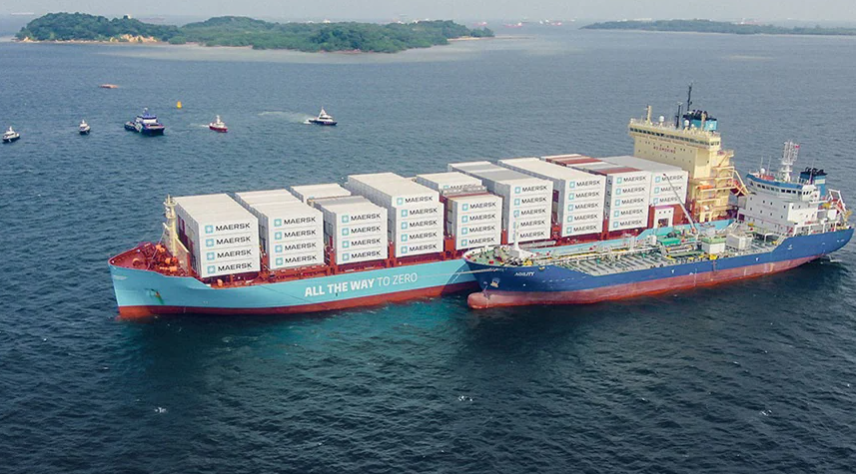据货代网了解,近年来,全球对气候变化及其环境影响的关注显著增加。在造成温室气体排放的行业中,航运业面临着越来越多的审查,需要采取有效措施来减少其环境足迹。
欧盟排放交易体系(ETS)最初成立于2005年,是一个以市场为基础的机制,旨在解决欧盟内部的温室气体排放问题。虽然它主要针对发电和制造业等能源密集型行业,但最近的发展包括欧盟排放交易体系中的航运。

最近的进展
2022年12月,政治谈判代表达成了一项临时协议,将欧盟碳排放交易体系扩展到航运领域。该协议随后于2023年5月16日通过并最终确定,并发表在欧盟官方公报上,该公报传达了欧盟机构采用的新法律和法规。到2024年,碳排放交易体系将涵盖欧洲经济区(EEA)内的航运活动,EEA由欧盟成员国、冰岛、列支敦士登和挪威组成。因此,船舶经营者将被要求监测和报告他们的排放量,并为他们排放的每吨二氧化碳交出配额。
碳定价和域外应用
根据新法律,欧盟排放交易体系的碳定价是根据船舶而不是货物确定的。除了为在欧盟国家之间航行的船只引入碳定价外,该法律还具有域外适用性。这意味着,如果船舶在欧盟港口和非欧盟港口之间航行,则航行中一半的排放量将受欧盟排放交易体系的约束。航运公司有义务购买以下排放配额:
从欧盟港口到非欧盟港口的航程排放量的50%,反之亦然。
欧盟港口之间航行的排放量为100%。
停靠在欧盟港口的船舶排放量的100%。
由于ETS扩展到海上运输活动增加了航运成本,谈判代表担心逃税和转运活动转移到欧盟以外的风险。为了缓解这种情况,该法律专门针对欧盟附近转运比例较高的非欧盟港口。对于这些港口,ETS有效地延长了航程长度,以解决对碳泄漏的担忧。
开始碳定价并纳入额外的温室气体
将航运纳入欧盟排放交易体系是应对气候变化的一个重要里程碑。它旨在为减少温室气体排放和促进向更可持续的做法过渡制定财政激励措施。随着新法律的通过,将分阶段实施航运碳定价。这意味着航运公司将被要求根据以下时间表提交相当于其部分排放量的配额:
到2024年,公司必须提交其经核实排放量的40%的配额。
到2025年,公司必须提交其经核实排放量的70%的配额。
从 2026 年起,公司必须提交所有经核实的排放量的配额。
此外,从2026年1月1日开始,碳排放交易体系的规定将扩大到包括两种额外的温室气体的排放:一氧化二氮和甲烷。虽然这种扩张的直接影响是有限的,但它发出了一个重要的信号,鼓励未来使用可再生燃料。这种循序渐进的方法将逐步提高每吨二氧化碳当量的航运碳价格,直到2026年。
这对客户意味着什么?
每报告1吨二氧化碳,每年必须购买2个欧盟配额(EUA)并提交给欧盟。这适用于所有负责购买 EUA 的运输公司。EUA可以在ICE,EEX和纳斯达克等交易所以及场外交易市场上购买。
欧盟排放交易体系从2024年开始引入航运碳定价。预计合规成本将很高,并将随着分阶段实施而不断增加。它将以称为“排放附加费”的独立附加费的形式传递,适用于受欧盟排放交易体系约束的所有航程预订。ECO送货预订将不受“排放附加费”的约束。选择ECO Delivery意味着我们用绿色燃料取代化石燃料。这项投资可减少预订的温室气体排放,并使您的供应链脱碳。了解有关 ECO 交付的更多信息。
预计在ETS交易的欧盟津贴(EUA)的波动性可能会因供求因素而增加。因此,排放附加费将每季度更新一次,以与EUA价格的变化保持一致。为了确保透明度,我们将参考EUA价格的公共指数。
以下是对以下交易中适用预订的2024年第一季度每个FFE排放附加费(以欧元计)的估计。2024年的二氧化碳排放义务为40%,为了计算估算,欧盟津贴(EUA)的价格被认为在90欧元左右。我们会在实施生效日期前最少30天公布实际的排放附加费。

来源:马士基官网